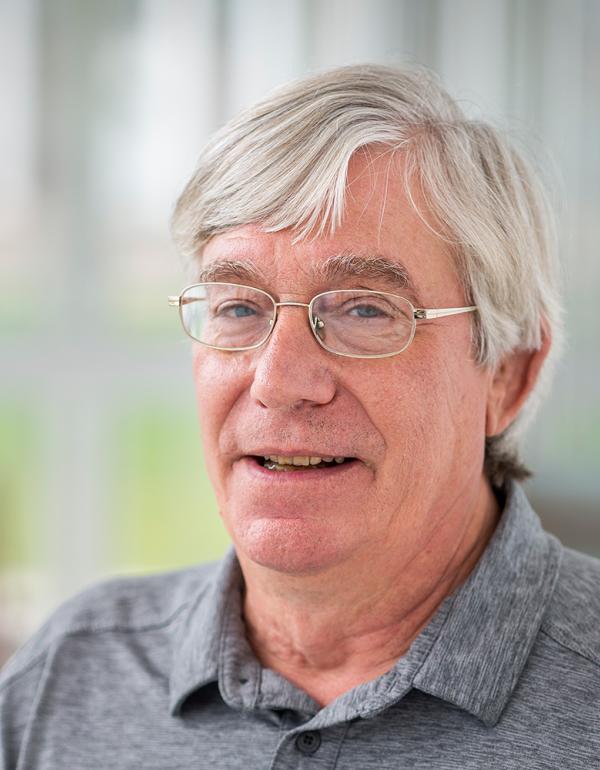
Education
- B.Sc., Chemistry, University of Pittsburgh, Pittsburgh, PA (1977).
- Ph.D., Biophysical Chemistry, Northwestern University, Evanston, IL (1983).
- NIH Postdoctoral Fellow, Department of Chemistry, University of California, Berkeley(1982-1984)
Professional Experience
- Assistant Scientist, Woods Hole Oceanographic Institution (1985 to March 1989).
- Associate Scientist, Woods Hole Oceanographic Institution (March 1989 to 1994).
- Associate Professor, Dept. Chem. & Biochem., University of Maryland (August 1994).
- Professor, Dept. of Chem.& Biochem., University of Maryland (August 1997).
- Associate Chair of Graduate Studies, Chem. & Biochem. (August 1999- May 2001)
- Adjunct Graduate Faculty, Michigan Technological University, University of Maine, University of North Carolina
Research Interests
Environmental photochemistry and optics; development of molecular probes to examine radical processes in both biological and environmental systems; optical properties and the remote sensing of seawater constituents.
Major Recognitions and Honors
- Excellence in Review Award, ACS journal, Environ. Sci. Technol. (2010)
- US EPA, Scientific and Technological Achievement Award, Level III (2008)
- Graduate Research Board Semester Award, University of Maryland, 2006
- Research Award, College of Life Sciences, University of Maryland, 1999.
- National Institutes of Health, James A. Shannon Director’s Award, 1R55GM44966(1991-1993).
- National Institutes of Health, National Research Service Award, 5F32GM0916 (1982-1984).
- National Institutes of Health, Public Health Service Pre-Doctoral Training Grant, 5T32GM07291 (1978-1980
Significant Professional Service and Activities
Plenary Speaker, Surface Ocean Lower Atmospheric Study (SOLAS): Open Science Meeting, 20-24 February, 2000, Damp, Germany; Conferencista, 24th Latin American Chemistry Congress, October 2000, Lima, Peru; Invited presentation, 7th International Symposium on Spin Trapping 2002. Spin Traps, Nitroxides and Nitric Oxide: Spectroscopy, Chemistry and Radical Biology. July 2002, Chapel Hill, N; Editorial Board, Aquatic Sciences (2001-); Co-Organizer, American Chemical Society Symposium on Impact of Photochemical Processes in the Hydrosphere, 225th ACS National Meeting, March 23-27, 2003 New Orleans, LA; Editor, Special Edition of Aquatic Sciences, “Impact of Photochemical Processes in the Hydrosphere” (2003); Invited presentations, Pontificia Universidad Catolica Del Peru, Lima, Peru (October 2003); Invited speaker (unable to attend), II Latin American Conference on UV Radiation, May 24-29, La Paz, Bolivia (2004). Invited Speaker, ACS Symposium on Free Radical Chemistry in the Environment, PacificChem Conference, December 2005, Honolulu, Hawaii. Invited presentations, University of Siena, and CNR Istituto di Biofisica, Pisa, Italy (January 2007); NSF Ocean Sciences Panel, May 2008. Since 1993, served as Chief Scientist on 14 oceanographic research cruises and as Co-Chief Scientist on 3 others.
Environmental Photochemistry and Optics
The long-term goals of this work are to understand the factors controlling the distribution and dynamics of chromophore-containing dissolved organic matter (CDOM) in natural waters, as well as the structural basis of its optical properties. CDOM is a complex organic material found ubiquitously in aquatic systems where it plays a central role, not only through its impact on the aquatic light field and on the remote sensing of phytoplankton biomass by satellite ocean color sensors, but also through its photochemical reactions (1). Although the optical absorption and emission properties of CDOM have been known and studied extensively for over fifty years, no satisfactory explanation has yet been provided that can account for the long-wavelength absorption and emission behavior of these materials. Based on prior work, we proposed that this behavior results from intramolecular charge transfer interactions between hydroxyl- (methoxy)-aromatic electron donors and carbonyl-containing electron acceptors formed by the partial oxidation of lignin or other poly-phenolic precursors (1-4). We have shown that borohydride reduction substantially alters the optical absorption and emission properties of CDOM and their pH dependence (4-6) as well as its photochemical properties (1,7), consistent with this model.
The structural predictions of the charge transfer model, as well as predicted relationships between CDOM structure and its optical and photochemical properties continue to be explored through the use of steady-state absorption and fluorescence spectroscopies, time-resolved fluorescence spectroscopy (8) (in collaboration with X. Zhang, Wuhan University), ultra-high resolution Fourier Transform ion cyclotron resonance mass spectrometry along with borodeuteride labeling (9) (in collaboration Michael Gonsior at the Chesapeake Biological Laboratory), as well as a by variety of (photo)chemical analyses employing HPLC and fluorescence spectroscopy. We have applied and continue to apply these approaches to waters from the Equatorial Atlantic Ocean (10), the North Pacific Ocean (11) and the Chesapeake Bay in collaboration with Stephanie Schollaert-Uz (NASA) and John McKay (Maryland Department of the Environment) in a project examining hyperspectral optical properties and the use of remote sensing to aid resource managers in the detection of poor water quality.
References:
1) C. Sharpless, N.V. Blough, Environ. Sci.: Processes Impacts, 2014, 16, 65.
2) R. Del Vecchio, N.V. Blough, Environ. Sci. Technol. 2004, 38, 3885.
3) L.C. Powers, N. Hertkorn, N. McDonald, P. Schmidt-Kopplin, R. Del Vecchio, N.V. Blough, M. Gonsior, Global Biogeochem. Cycles, 2019, 33, 1423.
4) T.M.Schendorf, R. Del Vecchio, M. Bianca, N.V. Blough, Environ. Sci, Technol., 2019, 53, 6310.
5) T.M Schendorf, R. Del Vecchio, K. Koech, N.V. Blough, Limnol. Ocenogr.: Methods, 2016, 14, 414.
6) R. Del Vecchio, T.M. Schendorf, N.V. Blough, Environ. Sci. Technol., 2017, 51, 13624.
7) Y. Zhang, N.V. Blough, Environ. Sci. Technol., 2016, Environ. Sci. Technol., 2016, 50, 11008.
8) Y. Chen, J. Liu, X. Zhang, N.V. Blough, Environ. Sci. Technol., 2020, 54, 12109.
9) M.R. Bianca, D.R. Baluha, M. Gonsior, P. Schmitt-Kopplin, R. Del Vecchio, N.V. Blough, Anal. Bioanal. Chem., 2020, 412, 1441.
10) A.A. Andrew, R. Del Vecchio, A. Subramaniam, N.V. Blough, Mar. Chem., 2013, 148, 33.
11) C.M. Cartisano, R. Del Vecchio, N.V. Blough, Mar, Chem., 2018, 204, 20.


